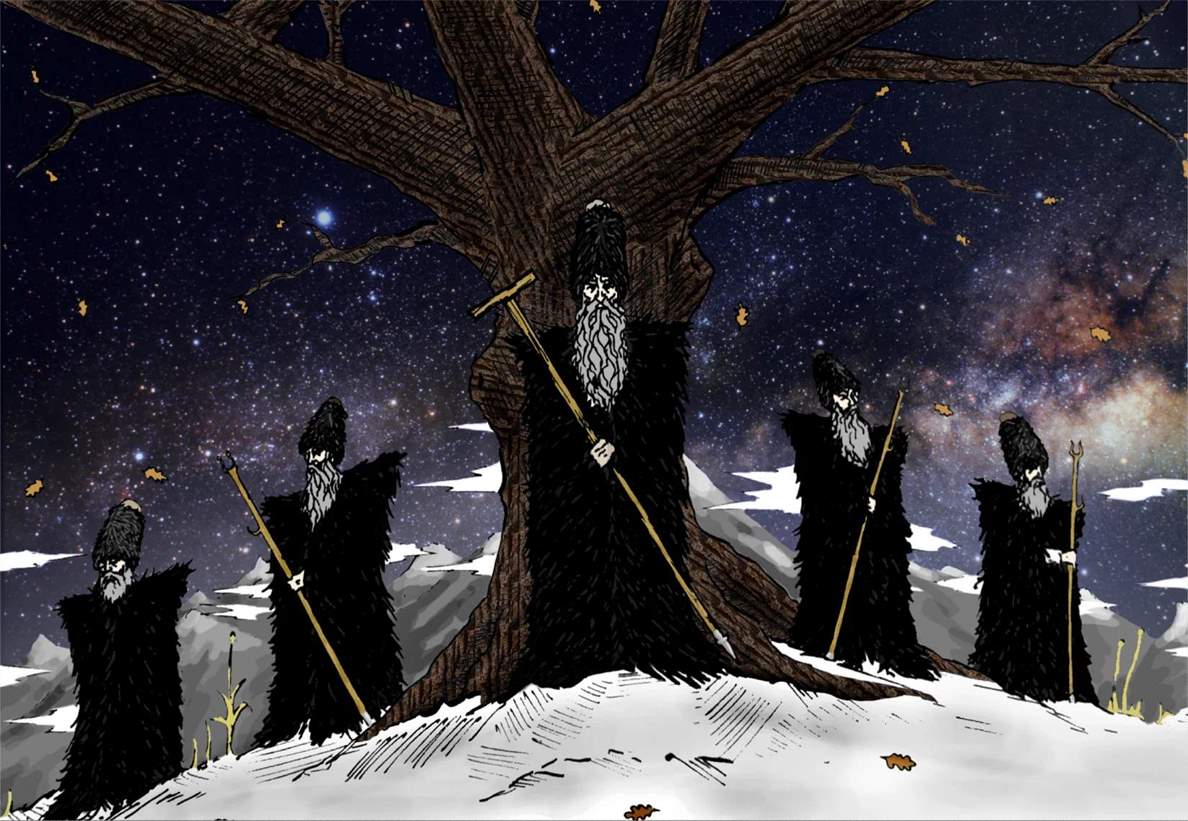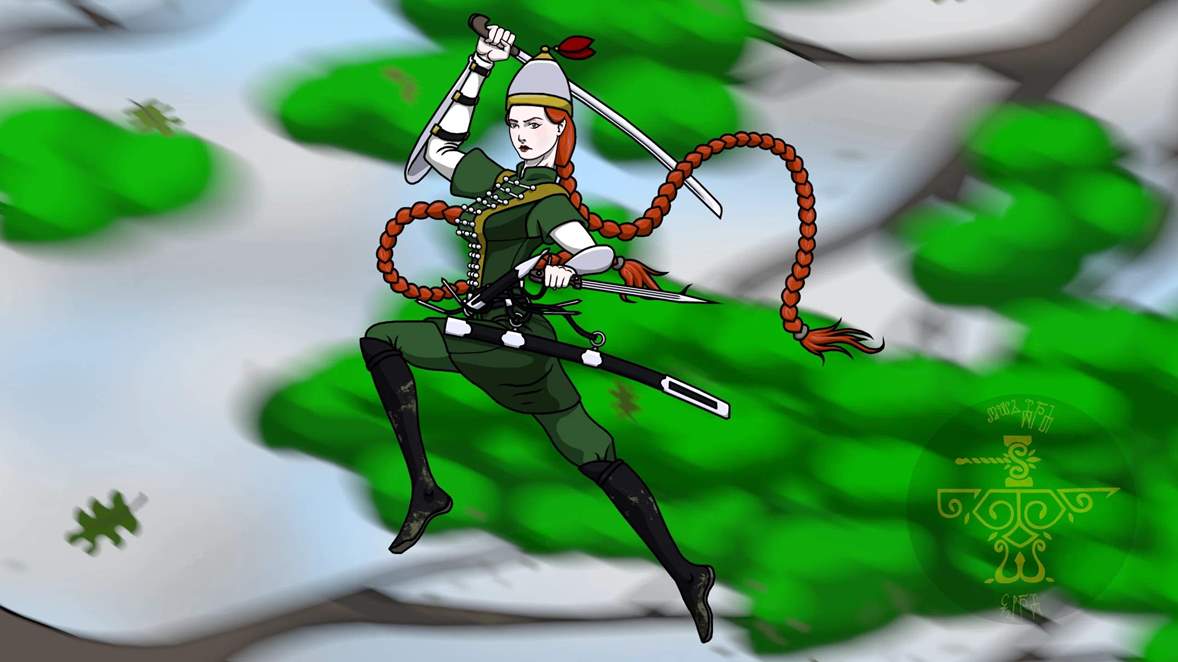AMMAN — Among those who once called the Caucasus home were the Circassians, or the Adyghe people — a predominantly Muslim ethnic group native to the northwest region of Caucasia and northeast coast of the Black Sea. Today, this land belongs to Russia and is divided into four republics: The Kabardino-Balkarian Republic, the Karachai-Cherkess Republic, the Adigey Republic, and the Shapsugh Region.
اضافة اعلان
Following the
Russo-Circassian War, the majority of Circassians were forcibly exiled by Tsarist Russia in the second half of the 19th century. Despite this, the group carried with it its culture, language, and code of conduct, known as Adyghe Xabze or Xabzeism.
Prior to the exodus, they were reputed among North Caucasians for their agricultural skills, stratified society, sophisticated language structures, and “cultic preoccupation” with elegance and beauty.
Today, the world is speckled with as many as 4 million Circassians, with large communities prospering in Jordan, Turkey, Syria, and Iraq, and others residing in the Russian republics. Within these communities, especially among the youth, journeys of cultural rediscovery have long inspired Circassian artists.
Below, three artists of the Circassian diaspora reflect on their creative processes and the inspiration they found in the cultural and historical vestiges of their homeland, known to them as Khakuzh.
 (Photo: Handout from Lalina Saralp)
(Photo: Handout from Lalina Saralp)
Weaving traditional Circassian patterns
Lalina Saralp was born in the heart of the Kabardino-Balkarian Republic of Russia, where Kabardians, members of the largest Circassian tribe, make up 55 percent of the population. Since childhood, she was inspired by the work of her mother and renowned designer, Madina Saralp, who specializes in traditional Circassian fashion.
At the young age of 15, she enrolled in the Zaitsev Fashion Laboratory where she studied fashion design with Vyacheslav Zaitsev, a celebrated Russian couturier. With a mission of revitalizing her culture, Saralp moved on to found her own clothing line at the age of 17, weaving traditional Circassian patterns and articles into modern designs.
“One of my favorite works is my latest collection, ‘Genetic Code.’ This was the first time I introduced male clothing into my work,” she said. “The collection is dark, with a masculine military aesthetic. It intertwines mysticism, Circassian mythology, and traditional costume while remaining modern.”
Saralp’s creative process relies heavily on improvisation. She likes to experiment with the various elements that constitute Circassian fashion, including embroidery, silver, felt, and leather. From painting on jean jackets to adorning dark fabrics with metal, she inspires creativity through methods of trial-and-error.
 (Photo: Handout from Lalina Saralp)
(Photo: Handout from Lalina Saralp)
The mountains of the Caucasus also give her strength, she said. She draws inspiration from the nature that surrounds her.
"Our native culture can surprise anyone. It's unusual, it's interesting.
Incorporating it in (my work) has helped me transform it and give it a new life."
Since founding her
fashion brand, Saralp, now 22, has hand-painted over 300 denim jackets and participated in 10 fashion shows. She has also worked on a multimedia project with a team of models and directors for her latest collection, “Genetic Code.”
What particularly excites her about her journey as an artist is that she has been able to raise awareness about Circassians among her audience.
“Many people don’t know about us (where I live). In my training with Zaitsev, there was a group of cool girls—a Moldovian, a Kazakhi, a Kyrgyzi, and a Russian,” said Saralp.
“They came to me and asked with great enthusiasm about my work and the origins of my designs. I told them all about it. Since then, they have been eager to visit, attend our weddings, walk among our mountains, and explore our traditions and music.”
Nonetheless, she said, there is still a lot of work to be done.
The preservation of a culture, especially one as intricate as hers, does not happen overnight.
Her great-grandmother was 98 years old when she passed away. As a child, Saralp was lucky enough to be around her for a while and admire the way she lived.
“(My grandmother’s generation) was the last to wear our traditional clothes and live exactly the way Circassians always lived. Now, there are no such people,” she said.
She believes that it is her duty to keep alive and protect the legacy of her ancestors by making the most out of what she has left of the culture, and adhering to Xabze, which teaches honor, compassion, gratuitous help, and a clear conscience.
“Everything can change: language, way of life, clothes,” said Saralp. “But if these changes are woven into a system of priorities, or a code of conduct, then the people will stay alive, their consciousness will stay alive, and their memory will be preserved. We call this system Xabze.”
Incorporating Circassian mythology into art
It was as if Zeina El-Said was fated to become an artist. She was raised by an interior designer, her mother; mentored throughout her youth by artists, her uncles; and grew up alongside a fashion designer, her sister.
But it was nine years after graduating from business school in England that she began painting with an emphasis on calligraphy and geometry. And it was four years after experimenting with several art mediums, such as plexiglass and wood and resin, that she took up collage.
The eclectic nature of collage was what drew Said to this medium.
She was mesmerized by the process of assembling different elements into single bodies of art. The items ranged from magazine cut-outs and tissue boxes to postcards and other ephemera.
More notably, she discovered that through this medium, which allowed for the assembly of various characters and worlds, she was able to express her long-held interest in Circassian mythology and pre-monotheistic cultures.
“The reason I pursue these themes in my work is I have a great interest in how the (Circassian culture) related to and affected the world. And what I have discovered is that it both influenced and was influenced by other cultures,” she said.
“For example, the
Nart myths (a series of fantastical myths originating from the Caucasus) can be viewed as the counterpart of Greek mythology.
At the same time, there are some theories that some parts of Greek mythology have Circassian origins.”
Another reason Said incorporates Circassian themes in her work is she wants to publicize the culture and make it known to the world.
And so far, she has succeeded in doing so.
Said's work has sparked global interest and participating in international exhibits has helped her raise awareness about her people, their history, and their culture.
Who are these people? Her audience would ask. Where do they come from?
Long before they reverted to Islam, Circassians were animists and worshipped nature. Their code of conduct evolved in accordance with the idea that everything is alive and has a spirit. Even their language is evidence of this, said Said.
“Many aspects of the earliest traces of (the Circassian) language show that everything has a definite soul,” she said. “When you want to express your love or your admiration for something, there are specific terms that you can use to express exactly that. This denotes a highly sophisticated and civil nation, I think.”
 (Photo: Handout from Zaina El-Said)
(Photo: Handout from Zaina El-Said)
In her collage work, Said erects central characters and figures, drawn from myths, photographs, or stories, then surrounds them with contrasting patterns, striking colors, towering, architectural structures, and surrealist elements.
Her favorite piece is titled “The Raven and Dame.” The inspiration behind it is one of the Nart myths, which delves into the belief that ancient Circassians, or the Narts, possessed shape-shifting abilities and often changed their form to converse with animals and trees.
Carrying on Circassian culture through modern mediums
Yahya Kuadzhe, better known as "Forge of Tlepsh," started his art account on Instagram in 2017 after leaving a Circassian youth group.
His long-simmering frustration with seeing overused imagery within the Circassian community encouraged him to create and publish his own work online.
The initial idea behind the page was to create image sources for other Circassian projects, offering his community prototypes for purchase and inspiration.
But as the account grew in popularity, Kuadzhe decided to do two things: to delve deeper through his art into the history of the Circassian people, and to create artwork for those in his community who wanted characters to relate to but had none.
In his art, he depicts characters from the Nart myths, ancient Circassians battered and bloodied by countless wars, Circassian demi-gods, skeletal figures dressed in traditional Circassian clothing, Circassian knights on horses, and female Circassian warriors parading their martial skills.
Kuadzhe said that although he would like for his Instagram project to reach a wider audience in the future, it mainly targets the Circassian community, especially the Circassian youth. On his Twitter account, he offers character design services, catering to a non-Circassian audience.
“People tell me about their characters. I ask about their appearance and then about their psyche because I feel the need to capture their emotions to (depict them) properly,” he said. “After a while, the character becomes mine as much as it is theirs because I invest myself in it.”
Reflecting on some of the withering aspects of the Circassian culture, such as the language, the mythology, and Xabzeism, Kuadzhe said that they cannot be saved or preserved single-handedly. The thought of their disappearance once troubled him, but he decided a few years ago to bury those worries in the past.
“This is a team-effort. You’re not going to save your language or your people or your culture on your own.
You can do your part and if it fails, it’s bound to fail,” he said. “So, it’s better to not worry about things you cannot control.
This is one of the things that I’ve learned along the way.”
Kuadzhe contended that to move forward as a people, Circassians must study, see, and learn from other perspectives to better and widen their own.
“If we want to be better, then we have to develop (our ancestors') point of view.
And that’s the thing with our Xabze; It was a living breathing thing. It was updated once every 40 years to suit the times.But now this isn’t possible because we’re so far apart. And we could bring ourselves together through the merits of technology, but I fear the structure is broken,” added Kuadzhe.
Nonetheless, Kuadzhe has faith in his work and the work of other artists.
He said that multimedia products are a critical tool for cultural preservation and encouraged Circassian animators and cartoonists to produce content that caters to the children in their community.
 (Photo: Handout from Yahya Kuadzhe)
(Photo: Handout from Yahya Kuadzhe)
 (Photo: Handout from Yahya Kuadzhe)
(Photo: Handout from Yahya Kuadzhe)

(Photo: Handout from Yahya Kuadzhe)
“This is probably an overused phrase,” he said. “But the children are the future. So, when I was a kid, I watched and played and acted like Superman, Batman, and Spider-Man, like heroes from the Marvel and DC universes. But what about our culture? It was nowhere to be found.”
He said if Circassian children had cartoons and superheroes to which they could relate, their parents wouldn't have to worry about teaching them the culture.
"How can we expect our children to protect and carry our culture to the future if they cannot entertain themselves with it?"
Read more Lifestyle








